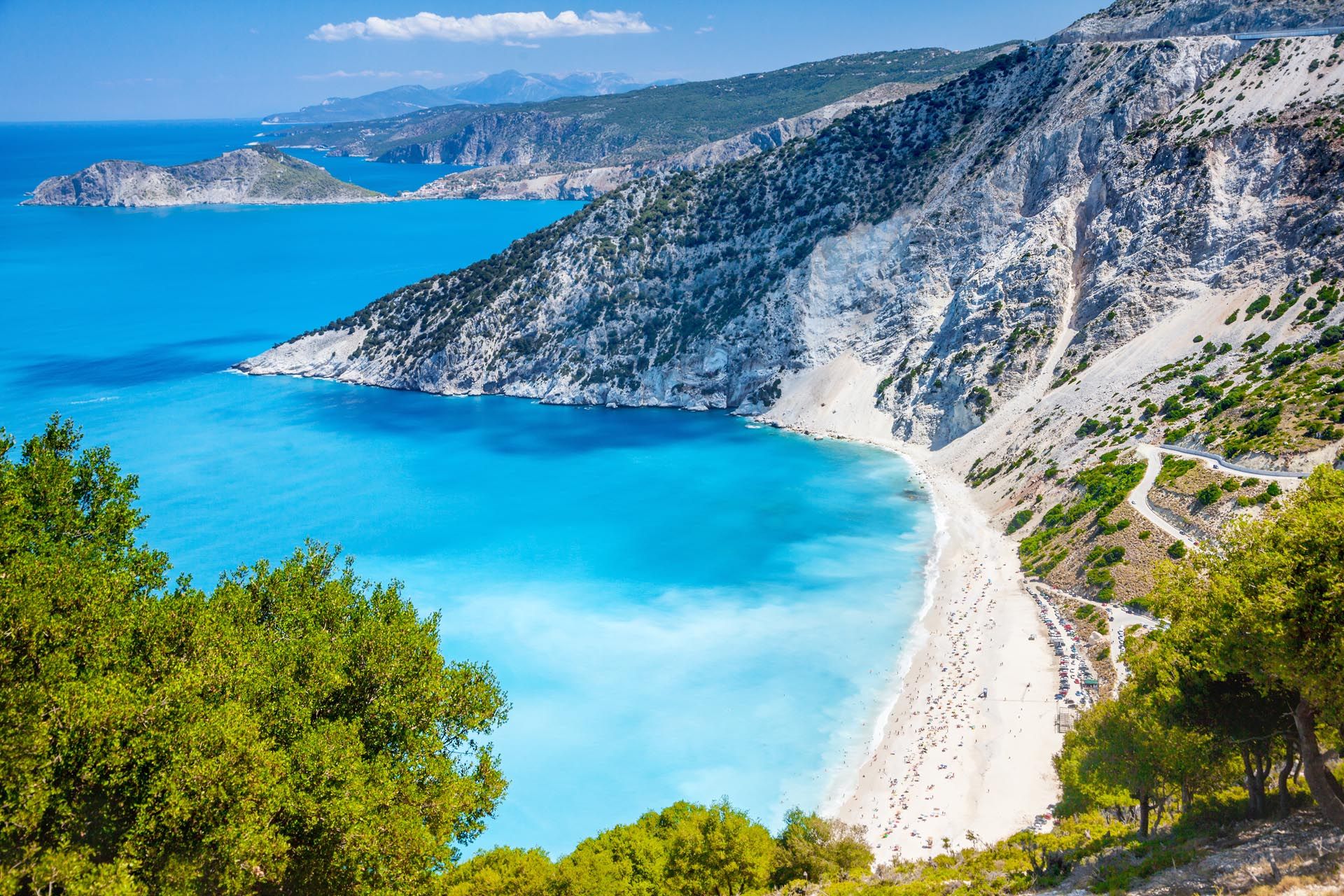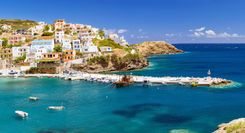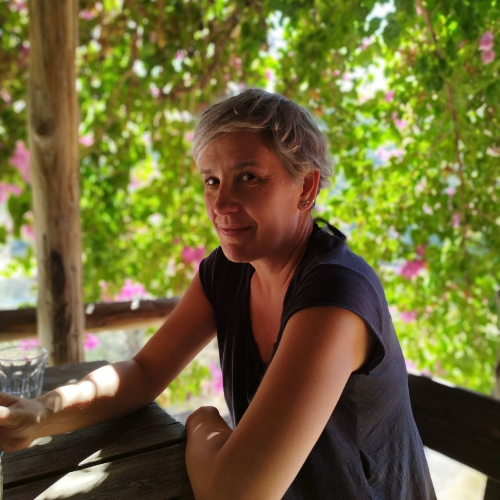4. Wander through the Venetian charm of Fiscardo
Sipping strong Greek coffee with a few cats for company, overlooking Assos Beach, is easily one of the best things to do in Kefalonia. Stock up on picnic supplies from Magganos’ delis and Picnic Café, then swing by Foki Fiskardo for a swim – there’s a sea cave just off the beach you can paddle into without much effort. In summer, yachts anchor here en route to Ithaca, giving the place a flash of Riviera glamour.
Unlike most of Kefalonia, Fiscardo village dodged the devastation of the 1953 earthquake. It shows. The old Venetian-style buildings are still standing, now home to boutique shops, glossy cafés, and pricey waterfront restaurants. The harbor’s a magnet for yachts, and in peak season, it can feel more polished than peaceful.
Too crowded? Head north to Emplisi Beach – no facilities, just flat stone slabs and space to sprawl. For sunset drinks and meze, backtrack south to Acqua Alaties Beach. It’s tiny, tucked away, and hits just right at golden hour.






















